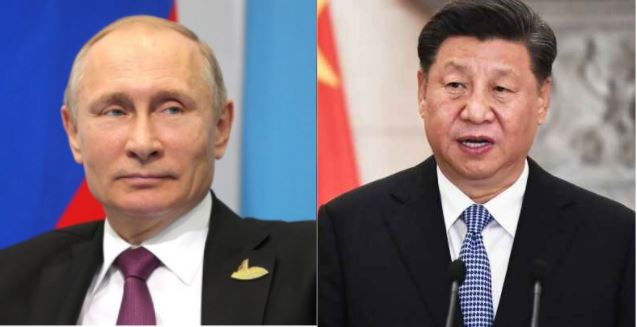The Arctic tensions between Putin led Russia and Jinping led China is finally taking the shape of a major build-up. Over the past three weeks or so, three important developments have shown that as the Arctic melts, the Sino-Russian axis of convenience is also going to wither away.
First, Russia successfully test-fired a Tsirkon hypersonic cruise missile in the Arctic last month. China responded by disclosing its plans to launch an imaging satellite to monitor Arctic shipping routes, a couple of weeks later. And now, the Peterson Air Force Base, Colorado of the United States gas claimed that Russia has tested its direct-ascent anti-satellite (DA-ASAT) missile system, under the leadership of Putin.
The missile system tested by Russia is capable of destroying satellites in low Earth orbit (LEO). According to the US Space Command, the DA-ASAT test followed the on-orbit of two satellites- COSMOS 2542 and COSMOS 2543, that “exhibited characteristics of a space weapon”.
Russia wouldn’t have tested an anti-satellite weapon without any concrete reason. Russian President Vladimir Putin is clearly growing apprehensive of China’s expansionist ambitions here.
It has been earlier reported by TFIGlobal that China’s Arctic probe would be admittedly used to observe changes in the sea ice, a key global warming phenomenon in the Arctic that will determine how quickly the region melts and opens up new shipping routes.
The School of Geospatial Engineering and Science at Guangzhou-based Sun Yat-Sen University is developing the probe. The Dean of this institute, Cheng Xiao, was quoted by SCMP as saying, “The satellite has a global observation capability but will focus on changes in Arctic sea ice.”
Xiao had also told Xinhua, “Compared with similar satellites, it is capable of revisiting most of the Arctic every two days and will be able to observe with a level of accuracy and frequency superior to existing polar satellites.”
So, Putin knows how China is trying to execute its Arctic plans. China has been more than eager to claim a special right over the region. China calls itself a “Near-Arctic State”, though it is a different matter that China is as far away from the Arctic as Poland.
The Middle Kingdom also aspires to build Polar Silk Road’ in the Arctic, as a part of Chinese President Xi Jinping’s Belt and Road Initiative (BRI). Global warming has accelerated the pace at which the Arctic is melting and by 2044, the polar region is expected to have completed melted for a part of the year paving way for international trade and commerce.
So, China has started bringing in investors, including State-owned enterprises, to develop its ‘Polar Silk Road’. A satellite launch to monitor the Arctic is only going to give a sense of finality to China’s expansionist plans.
On the other hand, Russia perceives the polar region as the exclusive of the eight Arctic countries, including itself. Russia doesn’t want to share an increasingly commercialised Arctic with the paper dragon. Russia is already operating the Northern Sea Route (NSR) that runs along the Russian Arctic Coast. And Putin wouldn’t want Xi Jinping’s ‘Polar Silk Road’ to overshadow the NSR.
Dominating the Arctic is thus becoming a race against time for both Russia and China. Putin knows that he will have to combat an attempted Arctic invasion two or three decades down the line, and so he is preparing already. While China’s President Xi Jinping is ready with satellites and investments, Putin is ready with hypersonic missiles and ASAT missile systems.
As Beijing and Moscow compete for the Arctic, the polar region is gradually heading towards unconventional warfare involving hypersonic and ASAT missiles.
